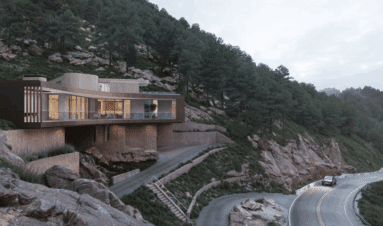Woodbury Branch Library
3265 Federal Blvd
Fast Facts
Architect: Humphries Poli Architects Original Unknown
Architectural Style: Renaissance Revival
Year Built: 1913
Designation: National Register of Historic Places
Neighborhood: Highlands
Year Renovated: 2009
WOODBURY BRANCH LIBRARY: 105-Year-Old Carnegie Library Still in Use
If you were a philanthropist, what causes would you choose to donate your money to?
The Woodbury Branch Library is among the first of Denver’s Carnegie libraries. These libraries were funded by the industrialist Andrew Carnegie, and were located all around the United States. The Woodbury library was constructed in 1913 in the Renaissance Revival style, and named for Roger Williams Woodbury, a businessman, journalist and banker who served as Denver’s first president of the Chamber of Commerce. Located in a central and prominent neighborhood of Denver, like many Carnegie-funded libraries, the Woodbury Branch Library features a simple but formal appearance. The Renaissance Revival style of the building is reminiscent of a classical Italian villa with its red clay tile roof, dramatic arched windows and substantial stone pediments (The Carnegie Branches-Woodbury Branch).
Structure
According to Denver Municipal Facts, “J. B. Benedict was the architect of this building, which is a beautiful example of the Florentine type of architecture. It is constructed of very light colored brick with a tile roof in reds and gunmetal colors. The arched windows and entrance are decorated with richly ornamented terra cotta. In front of the entrance there is a beautifully proportioned balustrade with flat vases and lighting standards. The furniture and the wood used in the interior is birch treated with a silver finish. The walls are of a light grayish-blue and the broad frieze at the top of the walls is in a stenciled design showing the lions of St. Mark’s in yellow. The high ceiling is timbered and all of the beams are exposed. Lighting fixtures are of black wrought iron. There are fireplaces with reading benches in front of them in both of the reading rooms. There are no wall paintings in this building, but two beautiful pictures of three panels each, reproductions of the Tudor paintings in the House of Lords, were presented by Mrs. Benedict for wall decorations.” (The Carnegie Branches)
This historic building has been renovated a number of times, with the latest renovation funded through the Better Denver Bond of 2007, overseen by Denver architecture firm Humphries Poli Architects. The renovation was programmed using Denver Public Library’s Learning and Language Service style and serves a highly diverse neighborhood population, with a high proportion of teenagers from the nearby North High School. The library includes learning centers in the basement, and exploration, transact and orient focused services on the first and second floors.
The renovation focuses mainly on improving the function, technology, energy-efficiency, building security, comfort and aesthetics of the library. The use of accent colors on select walls and updated finishes and furniture give the library new life. Perhaps the most striking interior features still in use today are the elegantly detailed, exposed wood roof trusses extending the length of the 1913 construction (Woodbury Branch Library).
Neighborhood
The Highlands is not just one district, but many, and was originally a city in its own right. It was incorporated in 1875. By 1890, Highlands included more than 35 separate subdivisions. The city had high aspirations of its own, touting clean air high above the smoke and industry of Denver, clean artesian water and, most important, clean morals. Although liquor was not forbidden in Highlands, liquor licenses were so expensive that none were issued until well after Prohibition. When Denver was still a dirty, dusty, rambunctious frontier town, devoid of trees and other vegetation, early Highlands settlers were engaged in more civilized pursuits: planting trees and gardens. While Denver was called the Queen City, Highlands was known as the Garden City of the Plains (Potter-Highlands Neighborhood History).
Carnegie Libraries
Many Americans first entered the worlds of information and imagination offered by reading when they walked through the front doors of a Carnegie library. One of 19th century industrialist Andrew Carnegie’s many philanthropies, these libraries entertained and educated millions. Between 1886 and 1919, Carnegie’s donations of more than $40 million paid for 1,679 new library buildings in communities large and small across America. Many still serve as civic centers, continuing in their original roles or fulfilling new ones as museums, offices or restaurants (Carnegie Libraries: The Future Made Bright).
The patron of these libraries stands out in the history of philanthropy. Carnegie was exceptional in part because of the scale of his contributions. He gave away $350 million, nearly 90 percent of the fortune he accumulated through the railroad and steel industries. Carnegie was also unusual because he supported such a variety of charities. His philanthropies included a Simplified Spelling Board, a fund that built 7,000 church organs, the Carnegie Institute in Pittsburgh, the Carnegie Foundation for the Advancement of Teaching and the Carnegie Endowment for Peace. Carnegie also stood out because some questioned his motivations for constructing libraries and criticized the methods he used to make the fortune that supported his gifts (Carnegie Libraries).
References
Denver Public Library. The Carnegie Branches-Woodbury Branch. Retrieved from https://history.denverlibrary.org/history-denver-public-library.
Humphries Poli Architects. Woodbury Branch Library. Retrieved from http://hparch.com/work/woodbury-branch-library/.
Denver Public Library. Potter-Highlands Neighborhood History. Retrieved from https://history.denverlibrary.org/potter-highlands-neighborhood-history.
National Park Service. Carnegie Libraries: The Future Made Bright. Retrieved from https://www.nps.gov/nr/twhp/wwwlps/lessons/50carnegie/50carnegie.htm.
Map
Woodbury Branch Library
3265 Federal Blvd, Denver, CO, USA
Nearby Sites
View All
High, Low, Buffalo
High, Low, Buffalo High, Low, Buffalo creates architecture that stirs souls and elevates everyda...
More Info
Tomecek Studio Architecture
The thoughtful, collaborative and lasting creation of architecture has the ability to impact the ...
More Info